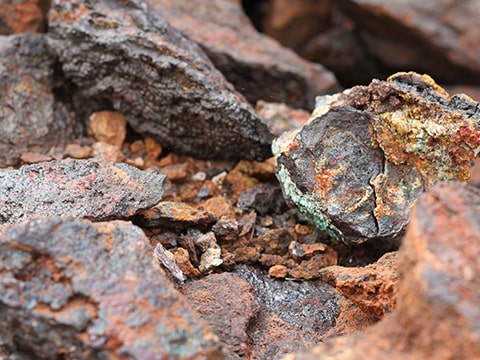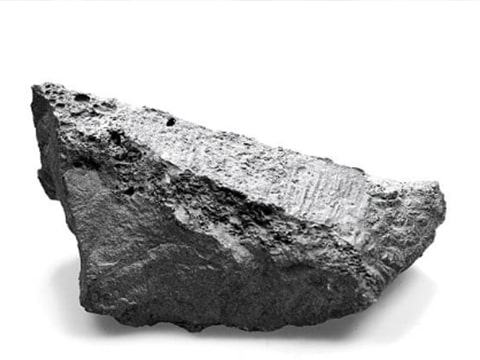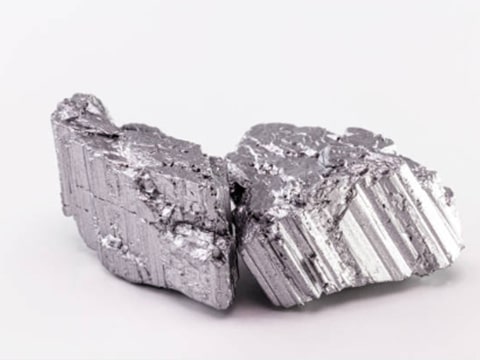
Magnets are extremely useful material. They're used in everything from modern industry to daily life.
The strength of the magnet depends on the type of material used to create it. But what exactly is a magnet made of? That's the focus of this article!
Magnets are made of a group of metals called ferromagnetic metals. Nickel, iron, and cobalt are examples of these metals, they have magnetic distances of their own.
The inner structure is aligned in the same direction, with one pole north (N) and one pole south (S).But monopole magnets (with just one pole)have been discovered.
As we know A Magnet is an object that repels and attracts each other, commonly referred to as ‘magnetic’.
Magnets can be divided into permanent magnets and non-permanent magnets.
Permanent magnets can be natural products, also known as lodestones, or they can be manufactured manually.
Non-permanent magnets, such as electromagnets, become magnetic only under certain conditions.
There are quite a few magnetic metals. You may be surprised to find that many of the metals you already use in your daily life are magnetic
There are some of the most well-known elemental metals that are magnetic:

Iron is widely distributed in life, accounting for 4.75% of the Earth's crust content, ranking fourth.
Pure iron is a metallic crystal with a silver-white metallic luster, usually gray to grayish-black amorphous fine grain or powder.
It is the Strongest ferromagnetism metal, belonging to magnetic materials.

Cobalt, known from early China and used in pottery glazes, was used by the ancient Greeks and Romans to make tinted glass, a beautiful dark blue color.
The blue color of Tang Dynasty porcelain is also due to the presence of cobalt compounds.
Cobalt is a ferromagnetic metal too with a melting point of 1493℃, cobalt has been used widely because of its excellent magnetic properties.
They can be used in high-temperature applications (up to under 500°C).

Nickel is a silver-white metal with ferromagnetic properties and good plasticity, Mainly used in the alloy (formula) (such as nickel steel and nickel silver),
can be used to make coins, etc., etc., plating on other metals can prevent rust.
Nickel is also a component of Alnico magnets (made of aluminum, nickel, and cobalt).
Alloys can also be magnetic if they contain iron, cobalt, or nickel. Common magnetic alloys include:
Due to its iron content, steel also exhibits ferromagnetic properties. Steel is attracted to magnets in most cases.
It is also possible to create permanent magnets using steel.
Some stainless steel is magnetic, including Ferritic stainless steel and martensitic stainless steel.
The Austenitic Steels are non-magnetic due to their molecular structure.

In addition to the normal metals mentioned above, some compounds of rare earth elements are also ferromagnetic.
Neodymium, samarium, and gadolinium are all magnetic rare earth metals.
Using rare earth metals combined with iron, cobalt, and nickel could manufacture magnets with different properties.
Such as Neodymium magnets(NdFeB) are made of neodymium, iron, and boron.
Which is widely used in electronics such as hard drives, mobile phones, headphones, and battery-powered tools.
Magnets can be categorized into two types: permanent magnets and non-permanent magnets.
Non-permanent magnets(Temporary magnets) are those that simply act like permanent magnets when they are within a strong magnetic field, such as electromagnets.
Permanent magnets are the most common type of magnet, and they can be made from different materials such as NdFeb, SmCo, Ferrite, AlNiCo, and FeCrCo.
You can see the details below:
Neodymium-iron-boron (NdFeB) is a type of rare-earth magnet. It is the most powerful permanent magnet commercially available.
These magnets are used in many applications, such as motors, generators, speakers, headphones, and hard drives.
Neodymium magnets are widely used and rapidly developing magnet products due to their excellent magnetic properties, easy processing, and relatively low price.But it also has its limitations,
for example, it will rapidly degrade its performance at temperatures over 150°, and most grades of NdFeB magnets need to be protected from oxidation by coating or electroplating.
Samarium cobalt magnets are a rare-earth magnet family too. The main components of SmCo magnets are samarium and cobalt.
Since both of the above rare-earth materials are expensive, SmCo magnets are among the most expensive magnets on the market today.
They have a high resistance to demagnetization, good corrosion resistance, and high-temperature stability.
Ferrite magnetic material is a non-metallic magnetic ceramic and is made of iron oxide and ceramic materials. Also known as magnetic ceramics.
They are the most common type of permanent magnet material made today and they have low cost and excellent temperature stability.
For example, the horn magnets in conventional radios are made of ferrite magnets.
Alnico magnets are based on an alloy of aluminum, nickel, cobalt, and other elements.
They are not as brittle as rare earth magnets and it is also resistant to corrosion and high temperature.
These powerful magnets offer excellent temperature stability, and can be used in high-temperature applications as high as 500°C (932°F).
AlNiCo magnets are commonly used for industrial applications such as electric motors, microphones, sensors, meters, loudspeakers, and more.
FeCrCo magnet is composed of 20~33% Chrome, 3~25% Cobalt, and the rest iron.
They have some properties similar to AlNiCo magnets, the service temperature can reach 400℃(752°F).
And unlike the AlNiCo magnet's brittleness, they are easy to metal process and can be produced in a very thin and very small part.
Typical applications for Iron Chrome Cobalt magnets are compasses.
This post has given you an introduction to the world of magnets. You now know how they are composed and how they work.
It is also important for you to understand that there are many different types of magnets, each with its unique properties and characteristics.
Magnets have been used since ancient times, however, recent developments have brought us closer than ever before to understanding how these materials work on a microscopic level,
giving rise to new applications such as magnetic resonance imaging (MRI).
This knowledge is essential for future research in magnetism as well as countless other fields!
If you want to know more about magnets or any custom magnet project inquiry, kindly contact us directly.
Posted on October 14, 2024 by MagnetAdmin
Posted on July 12, 2024 by MagnetAdmin
Posted on June 07, 2024 by MagnetAdmin
Posted on October 10, 2023 by MagnetAdmin
Posted on September 19, 2023 by MagnetAdmin
Posted on August 07, 2023 by MagnetAdmin
Posted on July 06, 2023 by MagnetAdmin
Posted on October 10, 2023 by MagnetAdmin
Posted on June 27, 2023 by MagnetAdmin
Posted on June 07, 2024 by MagnetAdmin

